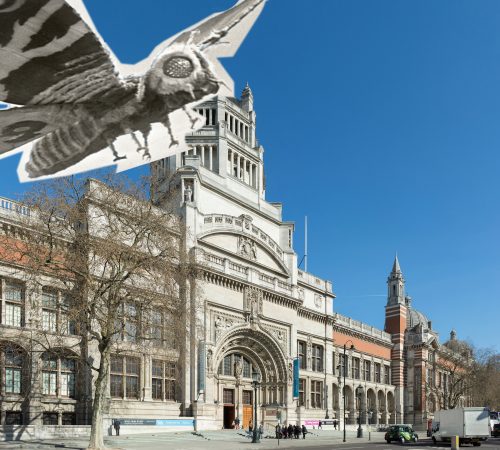A simple Raspberry Pi camera setup is helping staff at the Victoria and Albert Museum track and identify insects that are threatening priceless exhibits.

“Fiacre, I need an image of bug infestation at the V&A!”
The problem with bugs
Bugs: there’s no escaping them. Whether it’s ants in your kitchen or cockroaches in your post-apocalyptic fallout shelter, insects have a habit of inconveniently infesting edifices, intent on damaging beloved belongings.
And museums are as likely as anywhere to be hit by creepy-crawly visitors. Especially when many of their exhibits are old and deliciously dusty. Yum!
Tracking insects at the V&A
As Bhavesh Shah and Maris Ines Carvalho state on the V&A blog, monitoring insect activity has become common practice at their workplace. As part of the Integrated Pest Monitoring (IPM) strategy at the museum, they even have trained staff members who inspect traps and report back their findings.
“But what if we could develop a system that gives more insight into the behaviour of insects and then use this information to prevent future outbreaks?” ask Shah and Carvalho.
The team spent around £50 on a Raspberry Pi and a 160° camera, and used these and Claude Pageau’s PI-TIMOLO software project to build an insect monitoring system. The system is now integrated into the museum, tracking insects and recording their movements — even in low-light conditions.

Emma Ormond, Raspberry Pi Trading Office Manager and Doctor of Bugs, believes this to be a Bristletail or Silverfish.
“The initial results were promising. Temperature, humidity, and light sensors could also be added to find out, for example, what time of day insects are more active or if they favour particular environmental conditions.”
For more information on the project, visit the Victoria & Albert Museum blog. And for more information on the Victoria & Albert Museum, visit the Victoria & Albert Museum, London — it’s delightful. We highly recommend attending their Videogames: Design/Play/Disrupt exhibition, which is running until 24 February.
Website: LINK
Schreibe einen Kommentar
Du musst angemeldet sein, um einen Kommentar abzugeben.